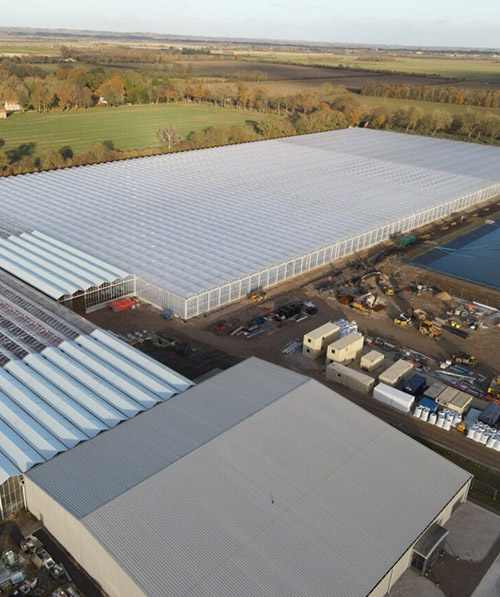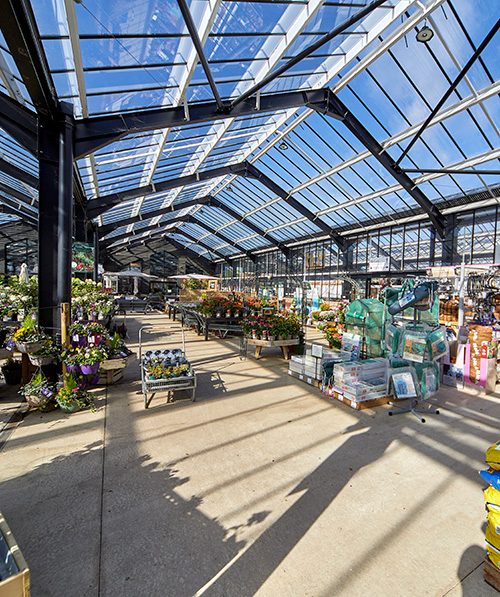Call Today 01430 449440
Cannabis climate modelling: The science behind success
By Patrick Harte, head of commercial
Growing cannabis on a commercial scale is a highly-specialist industry.
Having successfully converted several UK agricultural sites into cultivation facilities, our experts boast a wealth of cannabis climate modelling experience.
Since the launch of Crop17 earlier this year, in partnership with Hanway and Savills, we’ve acquired even more advanced technical knowledge.
Rather than just offer a ‘design and build’ service, myself and the team here at CambridgeHOK are proud to provide a full turnkey solution.
Our core cannabis services include:
- Cannabis climate modelling
- Home Office licence acquisition
- Design & construction
- GMP compliance
- Security Design & Implementation
- Business case development
- Route to Market access
But before a seed is sown, there are several main factors every grower must carefully consider to help shape a successful long-term business plan.
Size and layout
With cannabis, there is a bit of a misconception that you need a really large facility – and massive grow – to be commercially viable. But that’s not the case.
Investors wrongly assume that bigger is better, due to greater economies of scale.
The reality is you need to build a good facility which can be expanded and scaled modularly as this emerging market grows.
When it comes to determining the size and layout of a cultivation facility, the first thing we ask is: “How much cannabis are you trying to produce?”
Finding this out allows us to determine the facility size needed to achieve the required production output.
Some investors have a reasonable view of the size and layout they want to achieve before they contact us. Others do not.
Some people come to us with a number in mind – and say they want to have a facility which is ‘X’ in size.
However, when we ask why they’ve settled on that figure, they don’t know – they just think ‘it feels right’ in terms of scale.
At CambridgeHOK, the first key part of our role is to establish the right size cultivation facility. This is not always the same as the one the client wants to build.
Once we have defined the production output, we are able to support with the development of the full layout of the facility. Often one of the key discussions is separating GACP and GMP, alongside designing all of the rooms to be the correct size relatively to each other
We often advise that a facility only needs to be half as big as their original estimate. Even though this reduces the potential size of a project we’ll be working on, we adopt this approach because it’s the right thing to do for the investor.
Earlier this year, a potential client approached us to build a facility and we recommended their initial plans should be scaled back to make it 50 times smaller.
We gave this advice because we know the UK cannabis market – and we understand they’d have ended up with a facility that could have produced more cannabis than the current size of the entire European market.
However, rather than construct a bigger glasshouse (which was in our interests financially) we advised them to target a facility with a more realistic size. This would allow them to cultivate a yield which can actually be sold.
Adopting this honest approach helps us to develop a better long-term relationship between us and the client.
Having proven that our cannabis climate modelling works (by getting the first facility right), 99% of the time the client usually comes back to us and asks for help building phase two, three, four and so on.
If we weren’t so honest, we could end up building the initial cannabis facility far too big and it would not be profitable. This could result in the company going bust and we would not get any further work.
Rather than just ‘doing the build’ and what we were asked, we use our experience and insight to help clients deliver a really strong business plan that works in the long term. By getting it right first time, people trust us to do it again.
Lighting requirements
Lighting always sounds like the simplest aspect to get right, but getting it wrong can result in large (and unexpected) operational energy costs.
At CambridgeHOK, we take into account the total amount of light that’s needed by the cannabis plants and compare this to the amount of natural light which will be produced by the sun.
In a greenhouse grow environment, we can then work out the amount of artificial LED lighting that’s needed to bridge the gap.
This modelling is based the optimal amount of additional light required and is completed to a very accurate level.
In fact, we have software which can model the amount of predicted sun light (and expected temperatures) for every day of the year – based upon a specific town, city or location.
By analysing this in detail, we can determine the exact specification and design for a glasshouse. This ensures we do not waste capital expenditure by building a facility which is too high in specification. It also ensures it is not below specification, so it will be capable of delivering the expected yield.
At this stage, it’s also wise to factor in the impact of any additional operational costs which will be required to meet future energy needs. This can help to reduces operational expenditure in the long term.
Humidity control
Before growing cannabis in the UK, humidity is a major factor to consider as this will massively affect the yield’s size and quality.
Whilst there is a wide range of thought on humidity and optimum levels, at CambridgeHOK we believe UK cannabis growers should target an optimum humidity level of between 55 to 70 per cent, depending on crop stage of course. This does vary slightly, depending on the plant’s different cultivars, genetics and their propensity to disease – as some can tolerate higher levels.
Obviously, this is dependent on the quality of grow, the amount of pest and disease they’re prepared to accept and the amount of time plants will be grown.
A shorter and quicker grow (smaller plants) will result in a less dense canopy and less stacked height, so there’ll be less climate spots to deal with.
The different cultivars and genetics of the plant (and their different propensity to disease) will also impact on the level of humidity which will be tolerated.
In our experience, humidity is a real challenge for two main reasons:
- Cannabis loves sunlight – and it needs a tremendous amount to grow successfully.
- Cannabis uses a massive amount of water (8-12 litres of water/nutrients per sqm) – and needs a constant supply to keep on photosynthesising.
Both of these factors mean a huge amount of humidity is produced (out of the leaves) during the growth and flowering stage.
If you do not accurately manage humidity in a glasshouse or indoor grow, it will build and build – creating a climate that’s far too wet.
When growing tomatoes or strawberries, opening some vents is usually adequate to get rid of any excess heat and humidity.
But with cannabis, you cannot simply take humidity out by opening a few vents. You need mechanical support to achieve a completely controlled low humidity level (50 to 60), especially in the UK at certain times of the year.
This requires a recirculating system to take out humid air, remove excess moisture and get the air back to the ideal temperature, before reusing it and putting it back in to the glasshouse (to avoid wasting the vital CO2 it now contains).
Depending on the time of year and the plant’s need, cooling or heating may be required to ensure the relative humidity (RH) level remains between 50 to 60.
When climate modelling a cannabis grow in the UK, the most common design mistake we see is the failure to take humidity (and the amount of plant transpiration) into account.
Why is this important?
Get it wrong and your heating/cooling equipment will not be able to remove the amount of water required to maintain the right RH level.
This is especially important in the UK, where the RH level is around 80 to 85 for ambient air on a damp day. When raining, the ambient humidity might rise to into the high 90s.
If you’re a UK cannabis grower who has been advised to use ‘ambient’ air as the main way to remove humidity, this is going to cause serious problems.
At CambridgeHOK, we find this mistake is often made when trying to adopt designs which were for outside the UK. If you don’t fully understand the UK climate, you might take technology A and try to put it into country B. This does not work and is a common mistake which can negatively impact on a grow’s viability and profitability.
Having helped to design and install cannabis facilities in the Middle East and the UK, we are experts in climate control. As well as advice, we can provide equipment, climate controls, sensors and climate software tailored to an exact location.
With our fully integrated solution, you know what will happen if you affect one other factor – and you know how to deal with it appropriately.
Energy solutions
For UK cannabis growers, the biggest operational cost is energy.
Cannabis loves light – and needs lots of it!
To make cultivation more cost effective (and profitable), our experts have developed cannabis models that will:
- Optimise energy usage
- Predict energy spend
This can be tailored to any facility. Once the size and layout is known, we can determine which energy solution will be most effective.
Typically, our in-house team will carry out a full energy survey and audit any existing equipment before proposing the most efficient energy solution to decrease overall operational expenditure and increase profits.
As a complete turn-key commercial energy provider, we do not believe there is a one-size-fits-all solution. It could be a combined heat and power (CHP) plant, heat pump, biomass boiler or a complete Building Management System.
Our turn-key approach
To enter the UK cannabis market, it takes a significant multi-million-pound investment of at least £3m to £5m.
Securing a Home Office license and medical licences are also significant barriers to entry.
Whilst these factors may rule out most investors, the impressive profits which can be achieved do still make it a lucrative industry.
Typically, double-digit returns are possible.
At CambridgeHOK, we’re always keen to hear from investors who want to know more about this fast-growing market.
Rather than just designing and building a cannabis facility, we offer a full turn-key solution.
Even if you have no knowledge of the market, our experts can conduct a thorough profitability analysis and help shape your business plan.
We adopt this approach because we want to play an active role in the long-term operation of the facilities we build.
No matter where you are in the UK, our people have the cannabis modelling knowledge to know what will be a success.
Having already converted a number of UK agricultural sites into cannabis cultivation facilities, we also have the design and engineering support to put those plans into action. Tailored 100% to your needs.
If you require help navigating this heavily-regulated market, please don’t hesitate to email [email protected] or call 01430 449440 for an informal discussion.

Call us to speak to a member of our team or complete the enquiry form and we will get back to you
- 01430 449440
- [email protected]
- Wallingfen Park
236 Main Road
Newport, Brough
East Yorkshire
HU15 2RH












